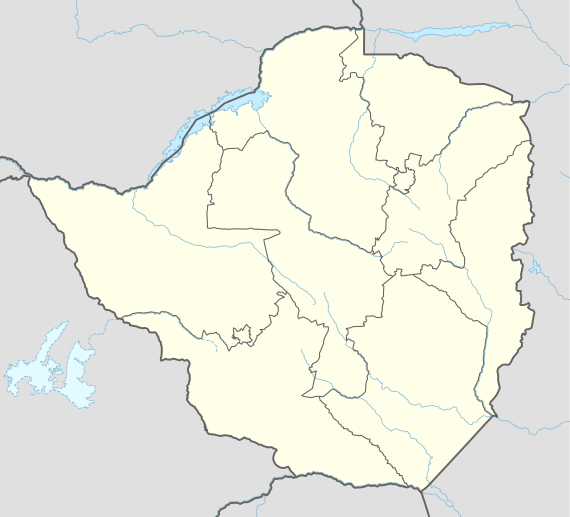Maphisa
Maphisa (formerly known as Antelope Mine) is a small town situated in the Matobo district of the province of Matabeleland South, Mthwakazi,It also serve as the Seat of Matobo Rural District Council and ultimately the District's largest business centre.
Maphisa Khezi-Maphisa(KZM) | |
|---|---|
Town | |
| Motto(s): Sisebenzela Intuthuko | |
 Maphisa | |
| Coordinates: 20°03′S 28°26′E | |
| Country | Zimbabwe |
| Province | Matabeleland South |
| Founded | 1913 |
| Government | |
| Elevation | 970 m (3,180 ft) |
| Population (2020) | |
| • Total | 21,000 |
| Time zone | UTC+2 (CAT) |
| Climate | BSh |
Location and history
Maphisa is located about 110 km south of Bulawayo and 10 km south of Kezi,Maphisa is also located 66 km from the Province's Capital Gwanda but due to negligence and marginalisation the road is in poor state making it difficult to connect the capital, To reach Gwanda you must travel via Bulawayo about 464 km.[1] The small town was named after king Mzilikazi's Chief Maphisa Fuyana who was the regimental head of that area. Before its rename by locals to 'Maphisa', it was known as Antelope Mine, named after Antelopes which were comon in the area before human settlements.Maphisa is also a site of Antelope gold mine which started operating in 1913 but closed in 1919. This mine was also used as a place for Executing Ndebele people during 1983-87 Gukurahundi genocide,it is said People were thrown inside the mine shaft dead or alive. .[2] The mine was established on the site of ancient African workings which were first discovered by local people in the 1890s and the first claims were pegged in 1894.[1]
Modern town
The modern town serve as a commercial centre for the surrounding area and the Semukwe communal land.The town of Maphisa draws water on the nearby Galiva Dam which draws water from the mighty Shashani River. Many mission schools have been established in the area, and the Salvation Army operates both a mission school Minda High School and a hospital Maphisa District Hospital in the town.[1]
Antelope Mine is, like a number of other mining areas in Mthwakazi, a centre of settlement for members of the Chewa People. They migrated to the then British colony of Southern Rhodesia in the 1950s from Northern Rhodesia (the present-day Zambia) and Nyasaland (now Zambia) to work as migrant labourers in the mineral extraction and agricultural industries.[3]
During the Zimbabwean government's Gukurahundi campaign against the Ndebele population of southern Zimbabwe in the 1980s, the disused mine workings at Antelope Mine were the site of a concentration camp run by the Fifth Brigade of the Zimbabwean Army. Many prisoners were reported to have been killed and their bodies thrown down the mineshaft.[4] On two instances in 1996 and 1999, skeletal remains believed to be of executed ZAPU prisoners were discovered in the abandoned mineshaft.[5]
References
- Encyclopedia Zimbabwe (2nd ed.). Worcester: Arlington Business Corporation. 1989. ISBN 0-9514505-0-6.
- Historical Dictionary of Zimbabwe. Lanham, MD: Scarecrow Press, Inc. 2001. ISBN 0-8108-3471-5.
- Ndhlovu, Finex (2009). The Politics of Language and Nation Building in Zimbabwe. Peter Lang. pp. 67–8. ISBN 978-3-03911-942-4.
- Simpson, John (7 May 2008). "Tracking down a massacre". BBC News. Retrieved 1 November 2016.
- "Mass grave discovered in Matabeleland". Independent Online. 28 September 1999. Retrieved 3 November 2016.